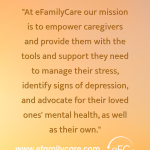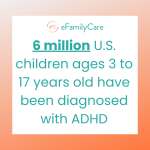
With the coronavirus waging on for months now, many Americans find themselves struggling with a form of pandemic fatigue. While an increased availability of testing in certain states has emboldened some to seek relief from the constraints of this situation, understanding the limitations of these tests is important for protecting yourself and the older adults in your life.
A negative coronavirus test result does not necessarily guarantee the virus is not present, as exposure to the virus at any point post-testing can potentially render the results obsolete. Though increased testing is a critical tool for combatting the virus, understanding the limitations and nuances of testing is important for ensuring your family’s protection. We’ve gathered information for help navigating the ins-and-outs of understanding coronavirus testing, to keep you and your adult loved ones safe. Read on for more information:
Asymptomatic and Presymptomatic Carriers
Health experts are still unsure of how effective COVID-19 testing is in healthy individuals. There are currently no approved tests for screening asymptomatic people– this means that having no symptoms and receiving a negative test result does not necessarily guarantee there is no coronavirus present. An article in The Atlantic, entitled “What a Negative COVID-19 Test Really Means,” cites presymptomatic transmission findings from a study in China. Their research found that 44 percent of transmissions occurred from passing the virus on unknowingly in the window before symptoms appear. In both asymptomatic and presymptomatic scenarios, it is important to remember that an undetectable amount of the virus does not mean it cannot still be spread to someone else.
Timing of Testing
While frequent testing for the coronavirus is advisable and responsible, considering the timing of these tests and their results is important for ensuring their effectiveness. A study published in Nature Medicine found that the amount of virus present in the system is typically highest at or right before symptoms appear. This can take as long as two weeks, but on average typically occurs around day five. Public health officials advise waiting four days to get tested if you know you are likely to have been exposed. The results of getting tested earlier than this may not reflect an accurate test.
Ensuring Safe Visits
While it is important to consider the unknowns around the efficacy of testing, getting tested is still recommended before spending time with an older adult. Additionally, it may be helpful to factor in the following when monitoring the safety of your visit:
- Am I experiencing any symptoms, even minor?
- Who have I been exposed to recently? How great is their risk of exposure to the virus?
- How safe has my behavior been around others? Do I consistently follow suggested mask-wearing, hand washing, and social distancing measures?
- How often do I engage with others in enclosed spaces that could potentially put me at greater risk of exposure to the virus?
- Factoring in my own age and underlying medical conditions, how susceptible am I to contracting COVID-19, even if symptoms are not present?
Understanding current limitations of testing is important for guiding the most appropriate measures for protecting everyone’s health. As we continue to learn more about the virus, it can be frustrating to feel as if information is always changing or difficult to interpret. At eFamilyCare we are committed to providing you with the most up-to-date knowledge available, keeping you and your family safe throughout this ever-evolving situation.







